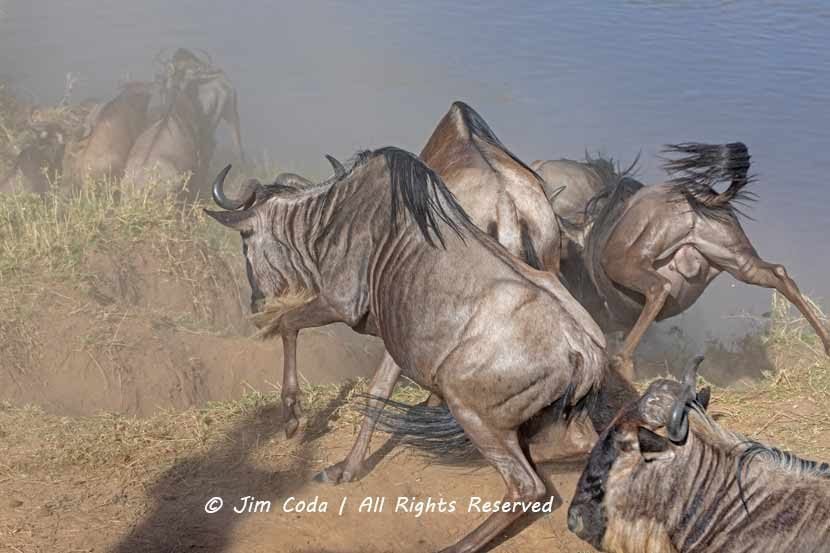Wildebeest Crossing Mara River, Serengeti National Park, Tanzania
Here are just a few of the 2,200 photos I took of thousands of wildebeests crossing the Mara River one morning in late September of 2018.

Wildebeests Stampeding Down the South Bank of the Mara River
Our guide, John, got us to the Mara River early in the morning and told us that there was no guarantee we would see any of the thousands of wildebeests we were watching actually cross the river into Kenya. We crossed our fingers. Many people wait for days without witnessing a crossing.

Some of the Thousands of Wildebeests that Crossed the Mara River
My two safari mates and I were standing and looking out the top of our Land Rover taking photos of the many wildebeests around us when John shouted “get down, get down”! He had spotted one or two individuals start to move down the steep bank of the river and he knew in a few seconds thousands of wildebeests would follow them and stampede to and across the river. John raced to a spot near the river’s edge where we could witness the crossing. In all my years of photographing wildlife this was the first time the word “pandemonium” came to mind, but that’s what it was. It was truly a moving experience. Thousands of wildebeests and a few zebras raced by for over 30 minutes.

A bottleneck occurred because animals were arriving at the far side of the river faster than they could climb the steep bank.
In addition to the still photos I shot many videos of the crossing. One shows animals falling down the bank either because they lost their footing in their steep climbs or they were forced off edges by too many animals in too little space. Some fell on others below. I had heard of animals breaking legs in these crossings, but all the ones we were watching made it across without any obvious injuries. There were no crocodiles where they crossed. John told us later that the water was too shallow there. Crocodiles prefer to grab their prey and drown them and this area was too shallow for that. I don’t know if the wildebeests crossed here for that reason.
After the dust settled, we drove upriver a ways and saw two wildebeests wedged between rocks in a rocky section of the river trying to free themselves. As we watched, it became clear they were never going to get free. None of their legs could touch bottom. There was a large crocodile watching them and just biding its time.







